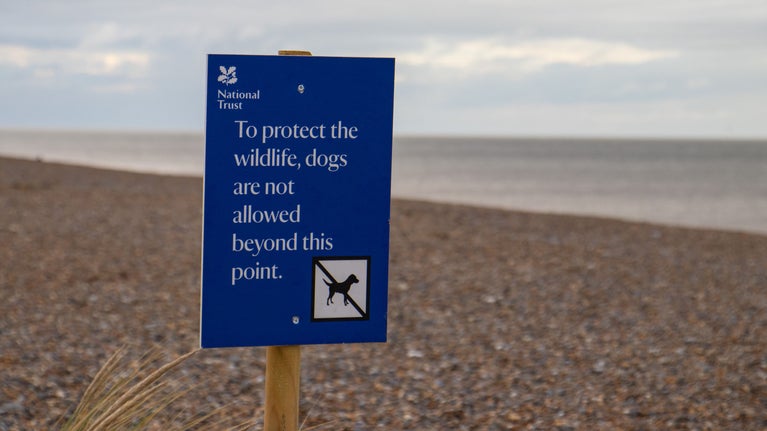
Discover more at Blakeney National Nature Reserve
Find out how to get to Blakeney National Nature Reserve, where to park, things to see and do and more.

Blakeney Point is home to England's largest grey seal colony, with around 7,500 pups born each winter. In spring and summer, many protected ground-nesting birds can be found here. Read our handy advice on when you can and can’t visit with your dog.
Dogs are not allowed on Blakeney Point during seal pupping season. This restriction is in place from late October to early January.
We’ve been working on making it easier for you to find out how dog-friendly your visit will be before you and your four-legged-friend arrive.
To help with this, we've created a new pawprint rating system and given all the places in our care a rating. You can find this information in the National Trust members’ handbook.
Blakeney Point is a one pawprint rated place. Dogs are welcome here from mid-January to the end of March, and between mid-August and late October.
Access is restricted during the rest of the year, due to the important wildlife that breeds here – terns and other ground nesting birds in spring and summer, and grey seals in the winter.
Many of the birds breeding on Blakeney Point, including terns, Oystercatchers, Redshanks, Avocets and Ringed Plovers nest on the ground, making them especially vulnerable to disturbance.
Whilst many factors have a bearing on breeding success, human and particularly dog disturbance can have a significant impact. The presence of dogs can cause birds to leave nests and chicks, leaving them open to predation by gulls and other predators.
Some ground-nesting birds, such as Avocets and Little Terns, are Schedule 1 protected species and disturbing these birds, even unintentionally, is a prosecutable offence.
From 1 April to 15 August, no dogs are allowed on Blakeney Point, which extends westwards from Cley beach car park (ie. the area to your left if you are at the car park and facing towards the sea) This is clearly marked with signs.
As the grey seal colony has grown larger each year, so we have had to adjust access to Blakeney Point during seal pupping season. This is to prevent disturbance to the colony as well as for the safety of visitors.
Exactly where access restrictions begin is dependent on how far along the Point the seal colony has extended each year. It may also be moved as the season progresses.
Dogs can cause alarm to seals and so are best left at home. During seal pupping season, our rangers and seal volunteers will be on hand to advise visitors on where they can walk their dog.
Restrictions apply from late October to mid-January and the restricted area will be clearly marked with signs along the width of the beach.
Dogs can be walked on the shingle beach east of the car park at Cley, and at Salthouse, throughout the year.
If you are walking at Cley or Salthouse during ground nesting bird season and seal pupping season, please be mindful of ground nesting birds and seals and keep your dog on a lead during these particularly sensitive times for our coastal wildlife.
The Norfolk Coast Path is recommended as an alternative local walking route that is dog friendly, with great views of the coast, without the same risks of disturbance to sensitive wildlife.

We’ve worked with our partner Forthglade to come up with this Canine Code, which helps to make sure everyone can enjoy their day:
Blakeney Point is part of Blakeney National Nature Reserve and has been under the care of the National Trust since 1912. Cley Marshes Nature Reserve was purchased by Norfolk Wildlife Trust in 1926 and was the first Wildlife Trust reserve in the country.
Together these reserves, which stretch for 6½ miles, are internationally recognised as vitally important habitats for breeding birds. Thank you for walking your dog responsibly.

Find out how to get to Blakeney National Nature Reserve, where to park, things to see and do and more.

We've partnered with natural pet food maker Forthglade so that you and your dog can get even more out of the special places we care for.
Find out about England’s largest grey seal colony, how we’ve changed the annual count due to ever-increasing numbers and why the seals call Blakeney Point home.

Find out the things to see and do at Blakeney National Nature Reserve, from seeing the seal colony at Blakeney Point to exploring Friary Hills and Blakeney Freshes.

Discover some of the best dog walking spots for you and your canine companion at the variety of dog-friendly National Trust places around Norfolk.
